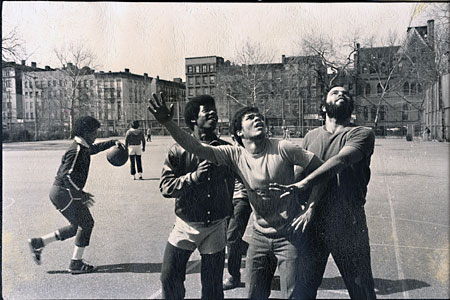History

In 1977, a student at New York University named Robert Siegal lived in Manhattan's East Village and dedicated himself to helping the community's troubled teenagers and their families. At first, Siegal used his own studio apartment as a safe haven for neighborhood kids, helping them with their schoolwork and sometimes giving them leftover meal tickets in the NYU cafeterias. But ultimately, after going to court and convincing a judge to keep one teenager out of jail, he realized that this was the most important service he could provide. Together with Angel Rodriguez, who was an intermediate director at a local Boys Club, they formed a youth advocacy program -- naming it after their friend Andrew Glover, a New York City policeman. Officer Glover, who had made a second career out of helping children on the Lower East Side, was shot to death in 1975 at age 34 by a drug dealer. Sadly, Siegal also died young, from an illness in 1979, at the age of 28, but not before creating a program that would permanently change the community.
After Siegal's death, Rodriguez -- who had grown up on the Lower East Side before attending Baruch College -- was determined that the Andrew Glover Youth Program would thrive as his friend would have wanted it. ''I couldn't turn way from the kids, I couldn't give up the mission,'' he says. ''Bob loved the community and its people, and the people loved him. So I picked up the pieces and tried to put them together as Bob had described it." Angel spent a considerable amount of time in the courts advocating for kids that the Andrew Glover Youth Program (AGYP) was offered office space at 100 Centre Street -- where the program's main courthouse offices are till this day. Realizing that there was a need for a safe space for youth in the neighborhood to go, the AGYP program staff and Board of Directors raised money and purchased an abandoned building at 100 Avenue B for $30,000 in 1986. With grant funding, the building was renovated and transformed into the first community center space for Avenues for Justice youth.
Today, Avenues for Justice has expanded to include a staff of 11 counselors and administrators, dozens of volunteers, and a second youth center that opened in East Harlem in 1998. Through generous donations from institutions and individuals, the centers now feature computer labs, study rooms, art supplies, kitchens, and other well-used amenities. Rodriguez's tireless efforts to keep Robert Siegal's dream alive have won several of the city's top honors for social service. In 2015, we changed our name to Avenues for Justice (AFJ), signifying our goal to set each of our clients on the path to a better future. After a 40-year track record of success, AFJ recently launched a program expansion to serve youth throuhgout Manhattan.
Photo Gallery: AFJ's, formerly the Andrew Glover Youth Program, history »



